
As Janice Kruger walked down a hall in the University of Nebraska-Lincoln’s physical education building for women, she was drawn in by the familiar “thunk” of bouncing volleyballs.
Through a door, she spied a gym full of women. The freshman from Randolph had just blundered into the tryouts for the university’s club volleyball team.
“My eyes just got wide open,” she recalled of that day.
Kruger asked the coach and found it wasn’t too late to try out. So she jumped on her green Schwinn and pedaled home to fetch her tennis shoes and knee pads, rode back, slammed the bike down and raced into the gym.
This was September 1973 — when women on campus didn’t have varsity sports, only club teams they largely funded themselves. Kruger at the moment was oblivious to a recent federal law that soon would profoundly reshape the landscape of women and sports.
People are also reading…
Today, Nebraska’s volleyball team enjoys rock star status when it takes the court, cheered by sellout crowds in an 8,000-seat arena where championship banners fill the rafters.
The proud program’s early 1970s roots, though, could hardly have been more humble.
The first players to officially suit up for Nebraska shared uniforms with the other women’s sports teams.
They were so scoffed at by the school’s male athletes that the football team challenged them to a volleyball match.
They traveled on shoestring budgets, piling into vans or station wagons and sleeping four to a room.
And they played their home matches before a smattering of fans in a campus P.E. building named for a celebrated women’s fitness advocate who, ironically, wasn’t keen to the idea of women playing competitive sports.
For those pioneering young women, none of that mattered. All they wanted was an opportunity. And they owed that chance to Title IX — the landmark equity in education law passed by Congress in 1972.
“We were just so happy, so grateful, for the opportunity to compete and play with each other,” said Kruger, who in 1974 became one of Nebraska’s first scholarship volleyball players. “It would not have happened without Title IX.”
This week marks the 50th anniversary of the passage of Title IX, offering a moment to step back and assess the law’s seismic impact on women in sports — and beyond.
In requiring that schools provide athletic opportunity for all, the law broke down the historical barriers that kept girls and women on the sidelines. Along the way, Title IX shattered many myths, the biggest being that girls simply weren’t interested in sports.
Today, millions of girls grow up enjoying the benefits of running, jumping and swatting, kicking or throwing balls, gaining life skills that serve them long after their playing days are over.
Teamwork. Leadership. Communication. Dealing with adversity and failure. And the biggest one: confidence.
“Team sports, sports in general, are more than just playing a game,” said Susie Heiser, who played on Nebraska’s first volleyball teams and later started her own corporate wellness firm.
And imagine how much less rich Nebraska sports history would have been without Jordan Larson’s powerful spikes, without Maurtice Ivy’s jump shot, without Connie Yori’s grit, without Peaches James’ fastball or without Angee Henry’s finishing kick.
While Title IX is most often associated with sports, it also opened doors for women to be trained in professions such as medicine and law. Looking back, Title IX has arguably been the biggest legal milestone in gender equality since women were granted the right to vote.
“There are a lot of big things that happened in the 20th Century — nuclear fission, Civil Rights and the computer,” said former Nebraska volleyball coach Terry Pettit. “But the most impactful thing was the changing role of women that came about because of Title IX.”
Still, for all its successes, women’s sports advocates point out that even after a half century, the athletic playing field for women is still far from level.
According to a World-Herald analysis of U.S. Department of Education data, while women comprise 55% of enrollees at NCAA-sanctioned schools, they make up only 44% of athletes.
UNL is among the schools falling short of parity between its enrollment and athletic opportunity for women, which is the only sure way for a school to comply with Title IX’s legal strictures. Most other colleges in Nebraska today also fall short of such parity.
And even Nebraska’s juggernaut volleyball team faces NCAA rules that bar players from receiving access to coaches or room and board during off-season summer training — rules that don’t similarly apply in football.
“Fifty years of Title IX, and we are simply not done yet,” said Danette Leighton, CEO of the Women’s Sports Foundation.
Today, polling shows the vast majority of Americans think Title IX has had a positive impact, a view that’s surprisingly shared nearly equally among both men and women. In fact, some of the biggest advocates of the law today are the dads of female athletes.
In viewing how drastically Title IX reshaped sports opportunity for women and girls, it’s hard to find a better lens than Nebraska volleyball.
As measured by both on-court success and fan fervor, it is easily among the nation’s most successful women’s athletic programs, regardless of sport. In the past year, the celebrity status of top NU volleyball players has even made them among the first female athletes nationally to cash in on marketing their own name, image and likeness.
Nebraska volleyball coach John Cook wasn’t around for the early days. But he certainly sees the legacy of those first Husker teams — and that of Title IX — in his program today.
“It brings us back to the original roots of Title IX, which was ‘Let’s even things out here,’” he said. “It’s come a long way.”
It was just a 37-word passage that had been slipped into an education bill signed by President Richard Nixon on June 23, 1972:
“No person in the United States shall, on the basis of sex, be excluded from participation in, be denied the benefits of, or be subjected to discrimination under any education program or activity receiving Federal financial assistance.”
Though there was little fanfare when Title IX passed, in essence the law meant any school from the elementary to college level that received federal funds had to provide fair and equal treatment of the sexes in all areas, including athletics.
The law came along at a time women often were subject to blatant discrimination in education. Traditional gender roles that had long largely limited women to becoming homemakers, nurses, teachers and secretaries kept women from being admitted to many colleges and specific programs of study.
In 1972, only 10% of medical students in the United States were women. Qualified women applicants would report being rejected by dozens of schools, which most often were run by males.
Within just three years of Title IX’s passage, the percentage of women in U.S. medical schools more than doubled. And today, more than half of all med school students are women.
At the time of Title IX, women comprised only 43% of college students. Within less than a decade after its passage, the percentage rose to 52%.
But athletics soon became the biggest focus of Title IX — as well as its most controversial element. Why?
For academic programs to comply with Title IX, they simply need to be open to anyone regardless of sex. But athletics are more complicated. Physical differences historically have kept men and women from fairly competing against each other in most sports.
So to comply with Title IX, schools and athletic governing boards have to decide what sports they will offer for girls and women, and then to fund them in a way that creates gender parity and equity.
There’s lots of legal gray area. As a result, Title IX implementation has been an often contentious, decades-long process that’s played out across the country — including in Lincoln, Nebraska.
Title IX first attracted notice on the UNL campus in 1973, when an academic honorary society was sued for refusing to admit women.
But by early 1974, as the federal regulations governing Title IX were being promulgated in Washington, it was becoming clear major changes were due in athletics.
UNL at the time had women’s club sports in volleyball, basketball, softball, swimming, tennis, gymnastics and field hockey that competed against other schools. Athletes generally paid out of pocket for their equipment and travel, with a member of the women’s physical education faculty often volunteering to serve as coach.
It had not always been that way.
The university had a women’s basketball team as far back as 1896, and, in 1901, it played a game against the University of Missouri that was said to be the first women’s intercollegiate match in the western states.
But there were many campus leaders at the time who viewed women’s sport as too rough and unladylike. In 1908, the Board of Regents banned intercollegiate competition for women.
In the decades that followed, the prevailing view of sports for women on campus was largely reflected by the beliefs of Mabel Lee, a legendary women’s P.E. faculty member.
Lee was among the nation’s strongest advocates of athletics for women. But Lee took the genteel, Victorian view that sports should just be for fun and recreation and to promote good health.
She felt all-out competition only emphasized the talents of the more gifted and put undue pressure on the other girls. Her ideal, she once told The World-Herald, was “to have games without keeping score.”
It seems Lee’s philosophy also was influential on the high school level in Nebraska. She had helped convince the state’s governing board for high school sports that basketball competition was too rugged for girls. It banned girls from competing in 1924 — a prohibition that would amazingly stand for half a century.
Likely due to such thinking, which also helped reinforce cultural stereotypes that girls who competed in sports were tomboys, Nebraska fell far behind most states in girls’ sports.
Neighboring Iowa, for example, first sanctioned girls high school basketball in 1920, and proceeded to add softball (1955), golf and tennis (1956), track (1962), cross country (1966), swimming (1967) and volleyball (1970).
In contrast, Nebraska did not sanction a single girls high school sport until it launched track in 1971.
The Iowa girls basketball championships, played in a six-on-six, half-court style that kept the girls from running around so much, each year were a marquee event. The tournament was even televised in a multistate region.
Growing up in Beatrice in the late 1960s, Sandy Stewart recalled watching the Iowa championship games on an Omaha TV station and being jealous as the top athletes in all the other girls’ sports were honored at halftime in a “parade of champions.”
“Why don’t we have this in Nebraska? We need to move to Iowa,” thought the girl who would go on to serve as the first student manager of the Husker volleyball team and the volleyball coach at the University of Iowa.
But long before Nebraska officially sanctioned girls high school sports, volleyball was flourishing in many small towns across the state.
By the 1950s, girls at 178 Nebraska high schools played the sport, their matches often held just before the boys’ basketball games. You weren’t likely to find volleyball at a high school in Omaha or Lincoln, but girls were playing in places like Humboldt, Murdock, Verdon and Elk Creek.
Kruger was among those lucky girls, playing volleyball for Randolph High School against teams from neighboring northeast Nebraska towns. Her experience helped her make the Nebraska club team after her impromptu tryout, days after arriving on campus in the fall of 1973.
While Kruger had not heard of Title IX by then, the law was beginning to attract the notice of a number of UNL faculty members. And at their urging, the school’s chancellor just months later appointed a campus commission to study the future of women’s athletics at Nebraska.
Possibly in response to Title IX, the university provided about $15,000 that 1973-47 school year to support the club teams, the funds coming from the women’s P.E. budget.
Some $10,000 was provided to be split as salaries for the coaches of the seven clubs, and $5,000 was allocated for the teams’ equipment and operations. The allocation that year to the volleyball club: $371.25.
But after the commission’s report came back, the chancellor in July 1974 announced a major upgrade for women’s athletics. In effect, the club sports would be elevated to varsity status, assigned to the athletic department under Athletic Director Bob Devaney.
For the first time, women would be provided athletic scholarship aid, as well as additional funding for qualified coaches, uniforms, equipment, facilities and travel.
The total budget for the 1974-75 school year was set at $60,000, including $30,000 for scholarships. The budget amounted to a fraction of the $3 million athletic budget, but it was a start. Title IX’s emphasis was not equal funding, but equal opportunity.
Not that the NCAA was interested in equal opportunity. The male-dominated body that sanctioned college athletics sued to try to stop Title IX’s implementation and wouldn’t sponsor women’s sports until 1982. Nebraska’s first women’s teams competed in the AIAW, the Association for Intercollegiate Athletics for Women.
Athletic department histories suggest the 1975-76 school year was the first for women’s varsity athletics at the school, with the 1975 team being the school’s inaugural volleyball squad. But don’t try to tell that to Pat Sullivan.
Before the fall 1974 term, Sullivan was hired to coach the volleyball team, and she would lead the Huskers for three years.
Given that her 1974 team ended the season competing in the AIAW regional championships, was allotted seven scholarships, and that Devaney by the chancellor’s directive was her boss, Sullivan isn’t sure why the school would consider the 1975 team the first.
“It was a murky time,” she acknowledged.
As school started, Sullivan held open tryouts in old Mabel Lee Hall, the women’s P.E. building. Some 80 women came out, with previous club players like then-sophomore Kruger having a leg up.
On Sept. 25, 1974, just a handful of players’ friends and family were on hand in Mabel Lee’s Room 133 to witness the Huskers’ first match against Peru State — not to be confused with Penn State. But the Husker women were ambitious and out to prove they belonged.
“The university as a whole doesn’t look at any women’s team with much respect,” Sullivan said that fall. “But we hope to change that.”
The team played all its home matches in Mabel Lee Hall for two years before moving to the NU Coliseum when the Devaney Center opened in 1976. In the cavernous coliseum, a couple rows of folding chairs would be set up for spectators along the sides of the court.
Interestingly, the Devaney sports complex had been planned without women’s sports in mind. As a result, a large locker room was converted for shared use by the women’s swimming, track and gymnastics teams. When one woman walked in and saw the remaining urinals, she said she thought they were foot-washers.
That certainly wasn’t the only way those first varsity women had to make due.
They typically would travel by van or carpool, and often didn’t have the option of lodging overnight.
“I remember pulling into the Mabel Lee parking lot at 6 a.m., and I’d have a player and a manager driving two vehicles behind me,” Sullivan said.
The seven women’s teams often shared uniforms, including a single set of warmups. In 1975, the basketball team actually wore second-hand uniforms from the defunct John F. Kennedy College in Wahoo.
For practice, the women just wore whatever collection of T-shirts and shorts they had. Kruger sometimes wore jean shorts. The team even scrapped for basics.
“I’d say, ‘I need 20 new volleyballs this season,’ and they’d say, ‘You can have three,’” Sullivan recalled.
What the women received in funding and support also certainly didn’t match that of the men.
Heiser, a freshman from Columbus on the 1974 volleyball team, had a unique window into such disparities. Her brother, Tom, was a wingback on the Husker football team.
While the football players generally got new uniforms each year, the volleyball team in 1975 held a fundraising relay run between Lincoln and Omaha to raise money for a second set of warmups.
While her scholarship didn’t cover room and board or books, all her brother’s needs were provided for, right down to the scuba gear for his scuba class.
“The dichotomy between what his life looked like as a student-athlete and mine were on completely opposite ends of the spectrum,” she said.
Heiser and others say the women weren’t resentful of that. For the time, they were happy just to have a team. But some early Huskers say Title IX did cause some friction between men’s and women’s athletics.
There was concern that women’s sports would cut into funding for men’s teams. Husker football coach Tom Osborne said he was not opposed to women’s sports, but he unsuccessfully lobbied in Washington to have revenue sports like football and men’s basketball exempted from the law.
Heiser said she never sensed any hostility from the male athletes, but they didn’t seem to take the women seriously.
Heiser said her brother was razzed by his teammates when their father was quoted in a Columbus newspaper saying that she was the best athlete in the family. So Susie and Tom arranged a volleyball match pitting the football team and the women’s volleyball team.
“These big, huge athletic men came in and thought they were going to pound us,” she said. “And we just killed them.”
Indeed, Husker women’s volleyball from the beginning proved a force. Players give much credit to Sullivan, a tactician and strong motivator who immediately began setting a foundation for success.
The 1974 team went 18-6 and finished second to Kearney State in the state championship tournament before seeing its season end in the AIAW north-central regionals.
From there, the program continued to build. Sullivan launched clinics for girls in Mabel Lee Hall during the summer to promote grassroots interest in the sport.
Sullivan also began recruiting players directly out of high school, though the process then was devoid of hoopla, particularly compared to today. Nancy Grant Colson was taking a lunch break at home with some friends from Lincoln East High School when she opened the letter informing her of her offer.
“Well, that’s neat,” she thought.
The Huskers in year two went 34-8, finished second in the region and qualified for the AIAW national championship tournament. Earning the opportunity to compete for a national title would become an annual rite for the Huskers, but the 1975 team was the first.
Despite the accomplishment, the players were going to have to pay their own way for the trip to Princeton, New Jersey, until a group of Lincoln businessmen stepped up to help.
Sullivan’s third and final Husker team also qualified for nationals and was crowned champion in the inaugural season of sanctioned Big Eight Conference play.
Sullivan then stepped aside to take a job in athletic administration. She later would regret it and return to coaching, but her move opened the door in Lincoln for Terry Pettit.
Pettit arrived in 1977 to find scholarships still limited. The school didn’t offer any full-ride volleyball aid until 1978, and it took years before the school reached the full allowed allotment of total scholarships.
Other resources also remained scarce and unequal. Pettit’s players were excluded from eating at the athletic training table. During preseason practices, Pettit had to work out a deal for his players to get two meals a day at Wendy’s and Arby’s.
Pettit recalled his players weren’t allowed into the Memorial Stadium athletic training room, needing to wait outside to be called in. And they were excluded from the department’s academic support facility, for fear the women would be a distraction to the football players.
Pettit, though, was muted in his complaints. He recognized the success of Nebraska’s high-powered football program was critical to his team, providing resources and elevating the school’s profile in recruiting.
Both Pettit and Cook also credit longtime women’s athletic administrator Barbara Hibner for quietly going to battle for women’s sports. Pettit said Hibner was coy, sometimes waiting until Devaney was happy with a big football win to approach him for a bigger travel per diem or new practice clothes.
Pettit said it wouldn’t be until Bill Byrne arrived as athletic director in 1992 that the department became truly attuned to its obligations under Title IX.
The story of what transpired under Pettit is by now well-known.
In 1986, Nebraska volleyball reached its first Final Four, becoming one of the sport’s first marquee programs outside the West Coast.
By then, Pettit was marketing volleyball to the school’s football-crazy fans, putting flyers in Memorial Stadium restrooms encouraging folks to head over to the Coliseum after the game. Fans became hooked by the power, elegance and athleticism of the sport.
The big breakthrough came in 1995 with Nebraska’s first NCAA title, a team whose star hitter and setter both grew up playing the sport in Nebraska. A second national title followed in 2000 under Cook — Pettit’s hand-picked successor, and still only the third coach in nearly a half century of Husker volleyball.

The 1995 Nebraska volleyball teams holds their national championship trophy.
PHIL JOHNSON, THE WORLD-HERALD
In 2001, Nebraska began an unprecedented volleyball sellout streak that’s at 286 matches and counting. The streak didn’t even skip a beat when the Huskers nine years ago moved from the 4,000-seat Coliseum into a newly renovated 8,000-seat home in the Devaney Center.
Of course, fans love a winner.
Nebraska’s five Division I national titles are the third most of any school, and its 16 Final Four appearances are the second most. In basketball, it’s a dream season to make the NCAA’s Sweet 16. Since the volleyball tournament expanded to 64 teams in 1998, Nebraska has made the final 16 in 23 of 24 years.
Nebraska’s nation-leading attendance after the move to the Devaney Center also helped the team achieve a rare distinction: it takes in more money than it spends. Few programs in any women’s sport can say that.
But in some ways, the battle for athletic parity continues.
Just last month, the American Volleyball Coaches Association filed a petition with the NCAA challenging why it bars volleyball players from receiving coaching or room and board during summer months while allowing football players to do so. Coaches believe it’s a clear violation of Title IX.
“It’s mind-boggling that the fight is not over,” Sullivan said.
Still, Sullivan and the original Huskers recognize the importance of Title IX in advancing women’s athletics and are grateful for its impact on their own lives.
Kruger went into coaching, turned UNO into a Division II power and then became the all-time-winningest coach at the University of Maryland.
Heiser spent most of her career in corporate fitness, eventually starting her own wellness firm in Washington, D.C.
Colson went on to teach and coach at both the high school and club level, watching Nebraska’s youth volleyball scene “just explode.” She also would see the legacy of Title IX continue with her own daughter going on to play college volleyball.
Those early Huskers also take pride in what Nebraska volleyball has become and the early role they played — with a major set-assist from Title IX.
“Now we have this great tradition and program that has stood the test of time,” Heiser said. “Everything has to start somewhere.”
Get local news delivered to your inbox!

Must See
-
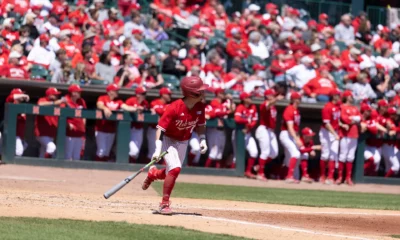

Baseball
/ 4 days agoHuskers Command Series Victory with a Resounding Win
In a spectacular show of force, Nebraska equaled its highest run tally of the...
-


Men's Gymnastics
/ 5 days agoHuskers Garner Five All-Americans at NCAA Gymnastics Finals
In Columbus, Ohio, the Nebraska men’s gymnastics team concluded their season with an impressive...
-
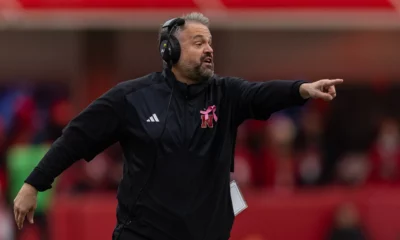

Football
/ 1 week agoCoach Rhule Reflects on Spring Practice and Transfer Portal
Nebraska’s football head coach, Matt Rhule, took some time to address the media after...



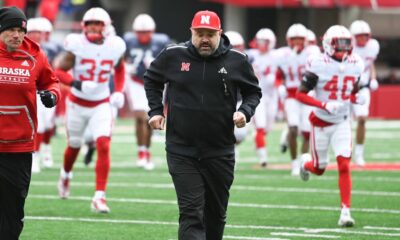

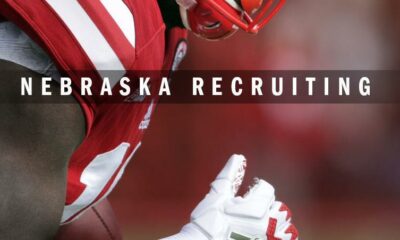

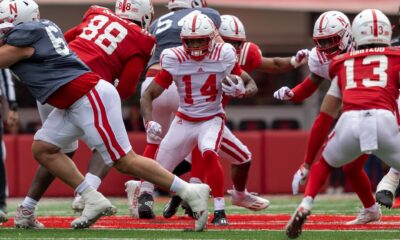

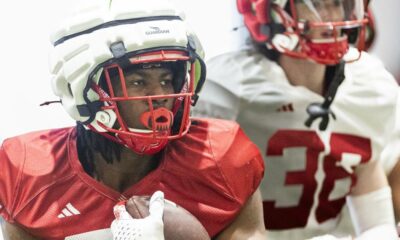

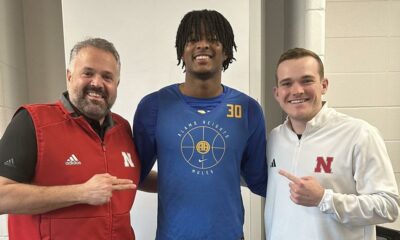

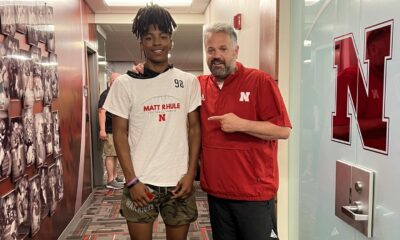



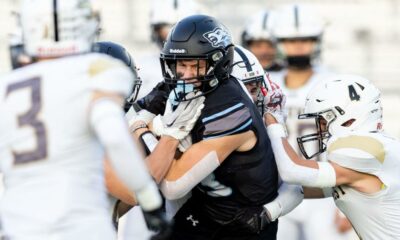





You must be logged in to post a comment Login